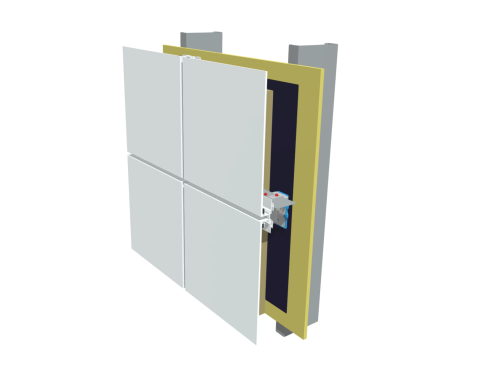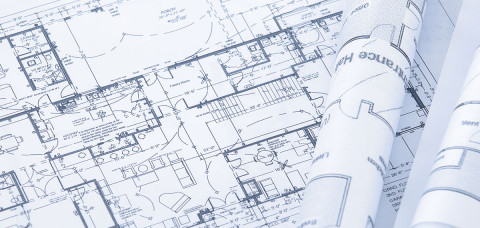Wayward Websites
There's often a lag between the time something new comes along and the time it is fully incorporated into our lives or work. When websites first came online, in the mid-'90s, they had obvious potential but companies weren't sure what to do with them. As I recall, many of them focused on the history of the company, stocks and market activity, and various other things useless to most visitors. The content was what the company owner thought was interesting; it was not what the prospective customers needed.
Time for change?
When I became a specifier, in 1985, all of the projects I worked on used the "traditional" design-bid-build (DBB) delivery method. And when I started my current job at BWBR in 1996, all we used was DBB. That shouldn't be a surprise because, at the time, there was nothing else, at least in the building construction industry.
Senseless security
How often have you seen a standard confidentiality disclaimer at the end of an email? An email I recently received ended with this:
This email together with any attachment(s) is proprietary and confidential, intended for only the recipient(s) named above and contains information that is privileged. You are hereby notified that the dissemination, distribution or copying of this email or its contents including attachments is strictly prohibited. If you have received this email in error, or are not the named recipient(s), you are hereby notified that any review, dissemination, distribution or copying of this communication is prohibited by the sender and doing so constitutes a violation of the Electronic Communications Privacy Act, 18 U.S.C. section 2510-2521. Although precautions have been taken to make sure no viruses are present in this email, [company name] cannot accept responsibility for any loss or damage that may arise from the use of this email or attachment(s).
The making of a convention
A lot goes into a convention: location, scheduling, publicity, solicitation of exhibitors, invitations to potential attendees, and more. Although the exhibit floor is extremely important to exhibitor and attendee alike, the educational seminars and activities are equally important. Those activities take many forms. The traditional lecture format continues to be popular, but interactive presentations have been increasing. Panel discussions, which seem to be either dreadful or very interesting, allow audience participation. In the last few years, we have had presentations and live demonstrations on the exhibit floor. On occasion, these involve one of my favorite activities - getting your hands dirty. Another recent addition has been YP Day (Young Professionals Day), a collection of special events aimed at young professionals and others new to the construction industry.
Where do bad specifications come from?
It's approaching ten years since I wrote "The Making of a Curmudgeon.*" In it, I reminisced about my decision to run for Institute Director and thinking, "Holy cow, when my term is done I'll be almost sixty!" Well, sixty came and went, and I recently celebrated my twentieth anniversary at my office.
Tower of Babel
Come, let Us go down and there confuse their language, that they may not understand one another’s speech.
I recently enjoyed watching a video clip of a senate confirmation hearing, in which Scott Pruit, EPA Administrator nominee, was being grilled by Joni Ernst, Senator from Iowa (the fun starts at about 2:14). At issue was the term WOTUS, or "Waters of the United States." Not knowing at the time I watched it what the term meant, it was amusing to see that 97 percent of Iowa would be governed by expansion of the existing definition. Further discussion focused on puddles and on a definition of a parking lot puddle as a "degraded wetland."
Building envelope - or building enclosure?
In October, I published "Tegularity," a discussion of the proper term for acoustic ceiling panels. (The title came from the name for a specific type of panel edge.) Shortly thereafter, in December 2016, I received a question from Anthony Capkun, editor for Electrical Business Magazine and former editor for the Construction Specifier. He asked, "What is the correct term these days: a) Building Envelope or b) Building Enclosure?"
Get your hands dirty!
Among the things specifiers grumble most about are the typical architect's lack of knowledge about how things work and how they go together, and the belief that "If I can draw it someone can build it!"
How did we get here? The transition to maintenance activities
So far in this series, we first looked at the good old days, when CSI membership rose continually, sometimes at an amazing rate. During the growth period, we saw that membership in CSI offered tangible benefits. CSI was an organization that helped those involved in construction to understand how construction documents are related, how to prepare them, and how to interpret them. Much of that information was developed by CSI members, so there were countless opportunities for members to take an active part in the future of specifications. Face meetings were important because the only other options for communication were written letters, which made real-time discussion impossible, and telephone calls, which were quite expensive.
Time for some fun!
Each summer, boards of directors make plans for the next year, education and certification committees begin preparing study courses, newsletter editors start bugging chapter presidents for articles, and planning committees search for good technical programs and tours. All of these are serious, necessary things that must be done to provide the services members expect.
Please say thank you
Please - say "Thank you!"
Among the first things parents drum into their children's heads are the words please and thank you. Parents do such a good job that these words become automatic, and, to a great extent, they become white noise. If they are used automatically, without conscious thought, what good are they? Do they mean anything? Why do we insist children use them, even if they don't mean what they say?
Key clauses of the general conditions; means and methods
In the last post, we looked at the complementary clause, and saw how powerful it can be; we also looked at the limits of that power. Many architects know of that clause, and I have occasionally heard it cited, something like this: "I don't care if there is no specification for it; it's on the drawings, and you have to provide it!" In the same conversation, it wouldn't be unusual to hear, "No, I don't know how you're going to do it - that's means and methods!"
Key clauses of the general conditions; complementarity
Although it didn't seem like it at the time, one of the best parts of my CSI chapter's certification classes was reading the A201 - not selectively, but the whole thing, beginning to end. Being the heart of the construction contract, anyone who works on a project should know what's in it. I can't quote every part of it, but it's familiar enough that I can find what I'm looking for fairly quickly. I don't deal with much of it, e.g., claims and time requirements, but there are a few parts that I find of particular interest.
Election time
I remember being, as a new CSI member, somewhat confused by our election process. Having been a voter for many years, I knew that the US president did not take office immediately, but was a president-elect for a short time. So it seemed strange that, instead of voting for the next president of CSI, we vote for a person who won't take office as president for at least a year. The other problem I had had nothing to do with the process; I simply didn't know who was running for office! But we'll get to that later.
The "Why" of CSI
In "Tell me again part 1" we looked at how proper use of reference standards can reduce the amount of text required by making those standards part of the specifications. In "Tell me again part 2" we saw how proper use of Division 01 can eliminate repeated requirements in specification sections in other Divisions. Now let's look at redundancies found on drawings and inspecifications.
Tell me again part 2
In "Tell me again part 1" we looked at how proper use of reference standards can reduce the amount of text required by making those standards part of the specifications. Going back to the "say it once" principal, proper use of Division 00 and Division 01 can go a long way toward eliminating needless text.
Are specifiers an endangered species?
For many years, there have been debates about the future of construction specifiers. Where will we find new specifiers? Are they all dying off? Is the profession no longer needed? While I believe there is reason for concern, I don't think much has changed.
Celebrate the Fellows!
Conventions are like state or county fairs: it seems they're the same year after year, and yet, if you compare this year's to the one a few years ago, there will be small differences. But sometimes, significant changes take place between one fair and the next.
More specifications history
In the last post, "Where have I heard that before?" (http://bit.ly/1maQmDs) I used several excerpts from a 1920 edition of the American Architect magazine. The comments showed a general concern about the importance of specifications, and about the absence of specifications in architectural education, stating "the preparation of specifications receives less study and attention in proportion to its importance than any other phase of architectural or engineering practice."
Where have I heard that before?
"It is probable that few members of the profession will disagree [that] the preparation of specifications receives less study and attention in proportion to its importance than any other phase of architectural or engineering practice. It is generally conceded that there is need for accurate, concise, yet comprehensive specifications in order to secure the best results from any set of plans. In our architectural schools … instruction in specification writing has been neglected to such an extent that those to whom the task of specification writing has fallen have usually been forced to educate themselves. As a natural sequence of this condition we find too many inaccurate and incomplete documents accompanying drawings under the guise of specifications."






